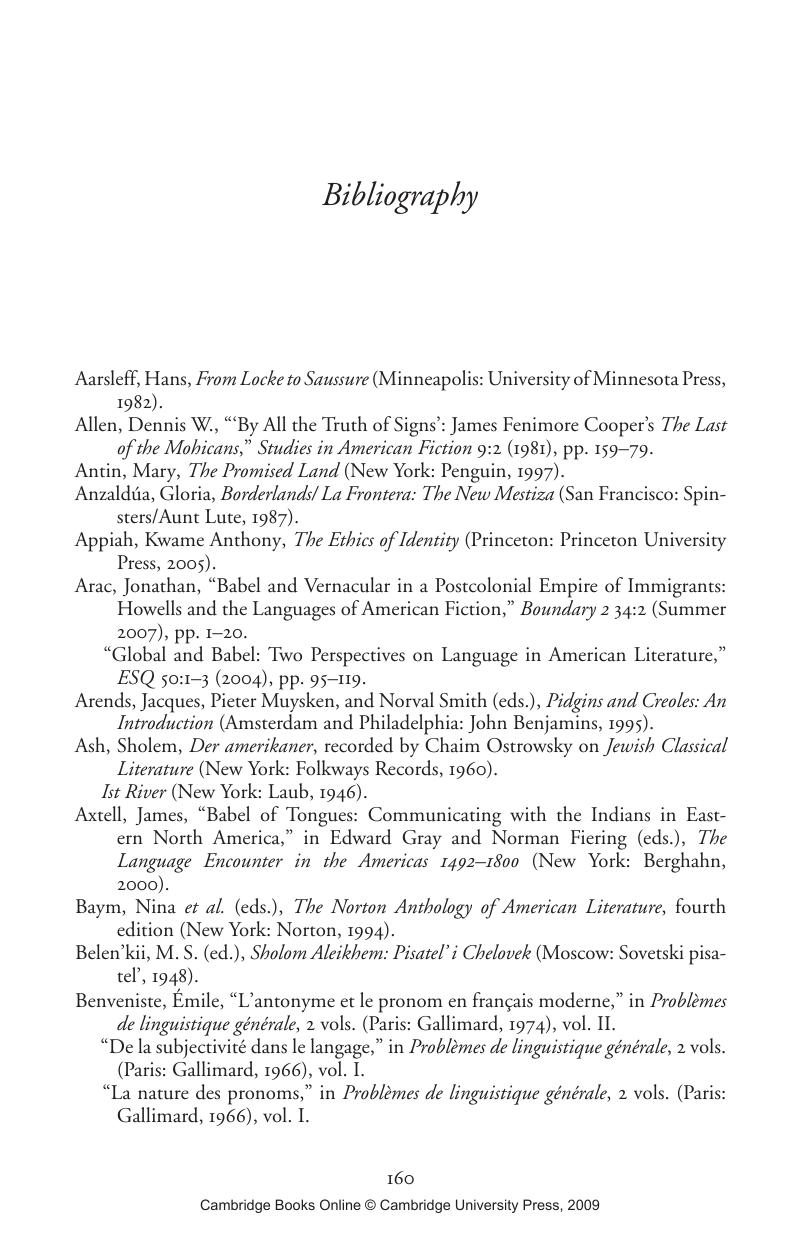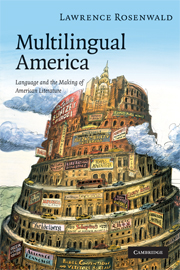Book contents
- Frontmatter
- Contents
- Preface
- Acknowledgments
- Introduction: techniques, methods, theses
- Chapter 1 Cooper's The Last of the Mohicans and the languages of America
- Chapter 2 Alfred Mercier, George W. Cable, and Louisiana French Creole
- Chapter 3 More than an echo, or, English in Yiddish in America
- Chapter 4 “New language fun,” or, on translating multilingual American texts
- Chapter 5 Towards a history of multilingual American literature
- Bibliography
- Index
- References
Bibliography
Published online by Cambridge University Press: 22 September 2009
- Frontmatter
- Contents
- Preface
- Acknowledgments
- Introduction: techniques, methods, theses
- Chapter 1 Cooper's The Last of the Mohicans and the languages of America
- Chapter 2 Alfred Mercier, George W. Cable, and Louisiana French Creole
- Chapter 3 More than an echo, or, English in Yiddish in America
- Chapter 4 “New language fun,” or, on translating multilingual American texts
- Chapter 5 Towards a history of multilingual American literature
- Bibliography
- Index
- References
Summary

- Type
- Chapter
- Information
- Multilingual AmericaLanguage and the Making of American Literature, pp. 160 - 170Publisher: Cambridge University PressPrint publication year: 2008



